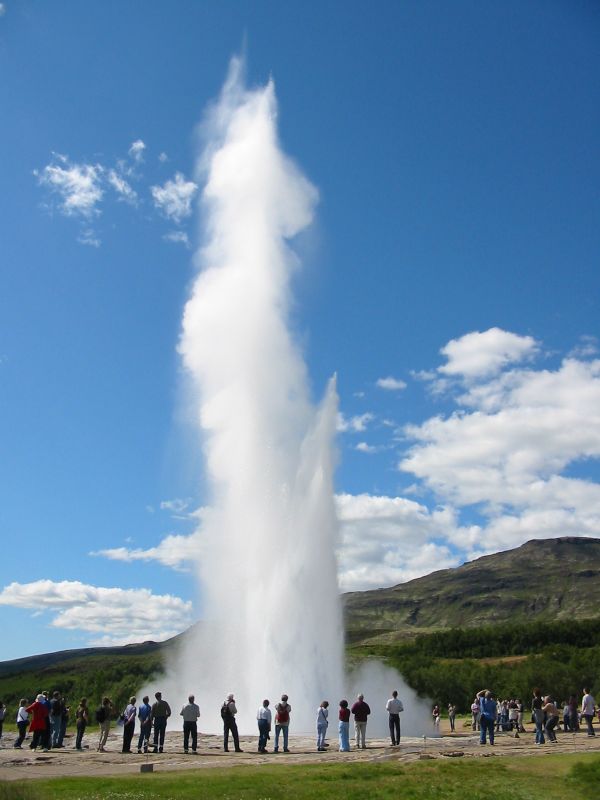After seeing today's Washington Post's article NASA just saw Europa’s geysers erupting into space. Again., and especially the phrase "geysers erupting into space" I checked and Europa has a surface gravity of about 1.3 $m/s^2$, which is substantial - almost the same as the Moon's at about 1.6 $m/s^2$!
The BBC's website article Europa moon 'spewing water jets' says
"Further evidence has been obtained to show that Jupiter's icy moon Europa throws jets of water out into space."
and
"The suggestion is that the jets reach several hundred kilometres in height before then falling back on to Europa."
On earth, pressure can come from geological hydrostatic forces and by steam produced by geothermal heating, but they rarely rise beyond a few dozen meters. That would be perhaps 100 meters in Europa's gravity.
However, unlikeThe images shown of the water above Europa show heights of 100 kilometers and more.
Unlike Earth rock being heavier than water, Europa's ice crust floats, and presumably there are no. What could be sources of hydrostatic pressure or pressurized steam near the surface.
The images shown of the water above Europa show heights of 100 kilometers and more. How do these that can create such "geysers" or "jets" rise so high inthat can project water to such substantialheights in this gravity?
above: The geyser Strokkur in Iceland, Earth, from here.
